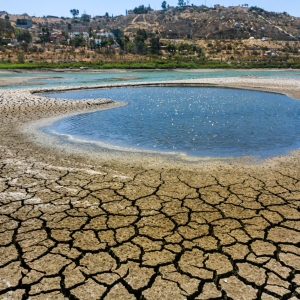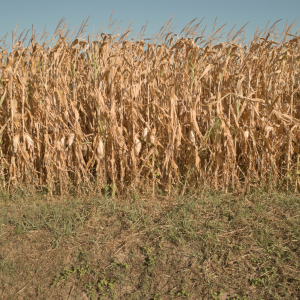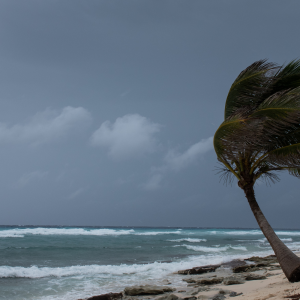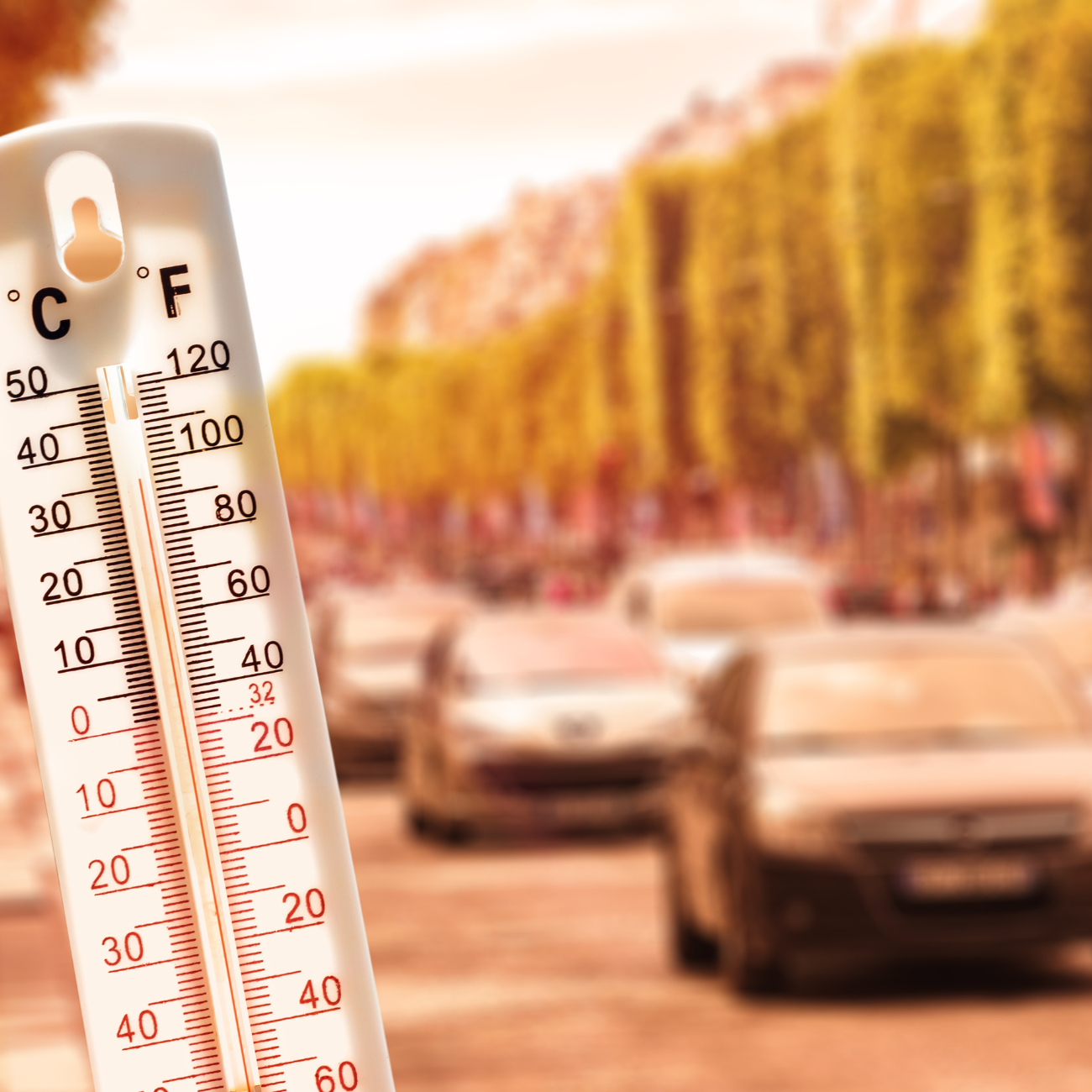Natural disasters and climate related events cost the world over $330 billion each year. Yet, only about 10% of climate funds go to adapting to these changes. This means we’re missing out on billions needed to protect our communities and businesses.
We need to invest more in making our places safer and more resilient. This is crucial as our climate continues to change. It’s not just about saving money; it’s about saving lives and protecting our future.
Key Takeaways:
- Economic losses from natural hazards and climate-related disasters exceed $330 billion annually.
- Less than 10% of climate finance is allocated to adaptation, leaving a significant financing gap.
- Unlocking private sector capital is crucial to scaling up adaptation and resilience investments.
- Over 100 investable activities, from vertical farming to nature based solutions, can drive adaptation and resilience.
- Rigorous impact assessment and reporting are essential to attract and mobilize more finance for adaptation.
The Escalating Costs of Climate Disasters.
Climate related disasters are causing huge damage to communities and economies around the world. The United States has seen 387 such disasters since 1980, costing almost $3 trillion. These disasters have left a deep mark on the country.
The number and severity of these disasters have grown over the years. In the 1980s, there were about three disasters a year, costing $21.8 billion. But by the 2010s, this number jumped to thirteen disasters a year, costing $99 billion. The 2020s have seen even more disasters, with an average of 20 a year costing $117 billion.

Economic Losses from Natural Hazards.
The economic damage from climate disasters is huge. In 2023, the U.S. faced over $92.9 billion in damages from natural disasters. This year, 28 weather events caused over $1 billion in damage each. The 2024 Climate Resiliency Report predicts 25 disaster scenarios, with costs ranging from $1 billion to $130 billion. Countries that ignore this gets hit hard when it happens.
The Adaptation Financing Gap.
The need for adaptation and resilience is growing fast. But, the gap in funding is getting wider. Currently, funding is far from the $212 billion needed yearly for developing countries by 2030. This gap makes it hard to protect vulnerable communities.
“Every $1 invested in disaster preparation beforehand can save $13 in economic and other related costs after an event.”
The world is seeing more extreme weather events, causing millions in damages each year. The financial burden is growing, with threats like pandemics and cyber risks adding to the problem. This situation calls for urgent global action.
Unlocking Private Sector Capital for Resilience.
Climate change is causing more damage than ever before. This makes it crucial to have strong adaptation and “resilience plans.” In the last few years, more money has been spent on climate adaptation, showing we understand the need for safety and risk reduction. But, many countries struggle to get the private money they need for their plans.
“The Guide” for Adaptation and Resilience Finance.
Leaders from the United Nations, Standard Chartered Bank, and KPMG have come together. They created a guide to help get more private money for adaptation and resilience. The Guide for Adaptation and Resilience Finance lists over 100 ways to invest, like:
- Vertical farming
- Natural flood protection
- Water conservation and efficiency measures
- Public hospital infrastructure investment
- Renewable energy storage solutions
- Mangrove conservation and replanting
This shows the huge chance for the private sector to help with climate resilience. It’s especially true for private sector climate finance and adaptation and resilience finance.
“The goal of the joint report is to inspire national action to program adequate resources for adaptation and resilience.”
The global economy could face up to $1 trillion in climate risks in the next five years. This makes it more important than ever for the private sector to get involved. The guide wants to use new financial tools and teamwork to increase private sector climate finance and adaptation and resilience finance. This will help us get ready for the future challenges.
100 Investable Activities for Adaptation and Resilience.
A new Guide for Adaptation and Resilience Finance aims to bring private money into climate efforts. It lists over 100 ways to invest in different areas. This guide helps banks and investors fund projects that make communities safer and more resilient.
This guide shows many ways to invest in climate safety, like growing crops that can handle tough weather. It also talks about building stronger homes, saving water, and using green energy. It helps make sure these investments fit the needs of each area.
It also has a detailed plan for checking if these investments really help. It looks at how well they meet climate goals and if they might cause harm. This careful process helps investors choose the best projects to support.
| Investable Activity | Sector | Adaptation and Resilience Benefits |
|---|---|---|
| Climate resilient crop cultivation | Agriculture | Increased food security, reduced vulnerability to climate shocks |
| Vertical farming | Agriculture | Efficient use of land and resources, reduced vulnerability to extreme weather |
| Natural flood protection | Infrastructure | Reduced flood risk, ecosystem services, and biodiversity conservation |
| Water conservation and efficiency | Water | Improved water security, reduced vulnerability to droughts |
| Resilient public hospital infrastructure | Health | Increased capacity to respond to climate related health emergencies |
| Renewable energy storage solutions | Energy | Improved energy resilience, reduced reliance on fossil fuels |
| Mangrove conservation and replanting | Ecosystem | Coastal protection, carbon sequestration, and biodiversity conservation |
This guide is a big step in getting more private money for climate safety. It shows how to invest in ways that help communities. It’s key to finding solutions that are good for the planet and fair for everyone.
“The Guide” for Adaptation and Resilience Finance is a significant step forward in mobilizing private capital for climate resilience. By identifying over 100 investable activities, it creates a blueprint for financial institutions to channel funds towards impactful and locally-relevant adaptation and resilience initiatives.”
Climate Adaptation and Disaster Resilience Investments: Mapping the Opportunities.
This guide helps investors and companies put money into projects that help with climate change and disaster resilience. It lists over 100 ways to invest in these areas. It also shows how to use money for these projects and the benefits they bring.

Identifying Eligible Use of Proceeds.
The guide helps figure out how to use money for climate and disaster projects. This includes:
- Building projects that are smart about climate change and use nature
- Technology for early warnings and disaster help
- Using nature to make places more resilient
- Products and services that help with resilience
Mapping Co-Benefits.
The guide also talks about the extra benefits of these investments. These are:
- Healthier communities
- More jobs and economic growth
- Protecting the environment and animals
- More fairness and strength in communities
This helps investors make smart choices for a better future.
| Company | Adaptation and Resilience Revenue Share (2022) |
|---|---|
| Multinational Technology Company | 18% |
| Multinational Pharmaceutical Company | 20% |
| Manufacturing Company | 2% |
“Investments in climate smart infrastructure can lead to economic opportunities for American workers and promote fiscal stewardship.”
This guide is key for investors, companies, and leaders. It shows how to invest wisely in climate and disaster projects. By doing this, we can make a big difference for the future.

Screening Investments for Impact.
The world faces growing costs from climate disasters. It’s vital to make sure investments in adaptation and resilience are effective and sustainable. The Guide for Adaptation and Resilience Finance offers a detailed method for checking investment opportunities. It focuses on three main points: how much they can help, the chance of making things worse, and the risk of causing harm.
Substantial Contribution and Risk of Maladaptation.
When looking at investments in adaptation and resilience, we must see if they can really help. We also need to think about the risk of making things worse. This means checking if the investment could actually increase vulnerability or cause problems it didn’t intend to.
Potential for Significant Harm.
Screening also looks at the risk of harm to other important goals. We check if the investment meets global standards for being safe and fair. This makes sure that focusing on resilience doesn’t hurt other important development goals.
By carefully checking investments, financial groups can make a big difference. They can help projects that are good for resilience without causing problems or making trade-offs.
“Incorporating climate risk considerations in the early stages of project development is critical for cost effective resilience strategies.”
The Resilience Rating System (RRS) by the World Bank Group is a great tool for checking investment projects. It looks at four areas: climate risk, how well the project adapts, its economic soundness, and how it helps people. This detailed check helps choose projects that focus on building resilience.
Good climate risk analysis is key for making smart choices. It ensures investments in adaptation and resilience really help everyone involved. It also avoids a one size fits all approach to risk.
Measuring and Reporting Impact.
As we work together to fight climate change, it’s key to track how well our efforts are doing. The Guide for Adaptation and Resilience Finance, made by Standard Chartered, KPMG, and UNDRR, helps with this. It gives a detailed plan for financial groups to see how their investments are making a difference.
Indicative List of Impact Indicators.
The guide lists important signs to check if our investments in adaptation and resilience are working. These signs cover areas like building, health, and nature. They look at things like how big the risks are, when we start seeing benefits, and how far we can go with our efforts.
- Resilient health investments: Share of damaged healthcare infrastructure after extreme weather events, reduced number of people with flood related infections
- Resilient infrastructure investments: Share of population with access to clean water under extreme events, length of adapted infrastructure
- Natural capital investments: Increased forest cover, improved soil health and moisture levels
| Indicator | Measurement | Sector |
|---|---|---|
| Share of damaged healthcare infrastructure after extreme weather events | Percentage | Resilient health |
| Reduced number of people with flood-related infections | Number of people | Resilient health |
| Share of population with access to clean water under extreme events | Percentage | Resilient infrastructure |
| Length of adapted infrastructure | Kilometers | Resilient infrastructure |
| Increased forest cover | Hectares | Natural capital |
| Improved soil health and moisture levels | Percentage | Natural capital |
These signs help financial groups see if their investments are making a real difference. This knowledge helps them make better choices and invest more in solutions that protect us from climate change.
The Case for Resilience in Finance.
The world is facing higher costs from climate disasters. More people are saying the finance sector needs to focus on resilience in finance, adaptation and resilience finance, and climate resilience investment. The Guide for Adaptation and Resilience Finance suggests banks and other financial groups should create new financial products. These could include loans and bonds for adaptation and resilience, to help fight climate change.
Sujit Kumar Mohanty, Chief of Branch at the United Nations Office for Disaster Risk Reduction (UNDRR), stresses the need for resilience in finance. “Resilience is not just about physical infrastructure,” Mohanty says. “It’s about making communities, institutions, and financial systems strong enough to handle and bounce back from shocks.”
“Resilience is not just about physical infrastructure. It’s about building the capacity of communities, institutions, and financial systems to withstand and recover from shocks.” – Sujit Kumar Mohanty, Chief of Branch, United Nations Office for Disaster Risk Reduction (UNDRR)
Marisa Drew, Chief Sustainability Officer at Standard Chartered, agrees. She says climate resilience investment is both a moral duty and a smart business move. “By investing in resilience, we can protect our assets, lower our risk from climate related issues, and find new ways to grow,” Drew explains.
The finance sector is answering the call for resilience in finance. The way forward is clear: Create new financial products, make resilience a part of decision-making, and use public-private partnerships to get the needed funds. This way, the industry can help protect communities, economies, and the planet from climate change’s growing threats.
Tracking the Money for Adaptation and Resilience.
The world faces a growing problem with climate related disasters. We need strong ways to fund adaptation and resilience efforts. This includes looking at public finance for climate change and new ways to handle losses and damages.
Public Finance for Climate Change Adaptation.
Experts say we need $783 billion by 2030 for climate adaptation in developing countries. But, only about $22 billion was raised each year in 2015 and 2016, according to the Climate Policy Initiative (CPI). This shows we must invest more to meet the demand.
Financial Arrangements for Losses and Damages.
There’s also a big push for financial help for climate related losses and damages. A new report offers a first look at how to fund these losses. It helps us see where we need more help at the national level.
Tracking money for adaptation and resilience is key. We need to close the funding gap and use resources well. This will help protect communities and economies from climate change.
| Metric | Value |
|---|---|
| Developing countries’ annual adaptation investment required by 2050 | $280 billion to $500 billion |
| NDC-based adaptation cost estimates by 2030 | $783 billion |
| Public adaptation and resilience finance tracked by CPI in 2015-2016 | $22 billion annually |
| International climate finance commitment by 2020 | $100 billion per year |
| Annual adaptation and resilience investment needed | Over $200 billion |
New ideas, like the “Resilience Monetization and Credit Initiative,” are trying to solve the funding gap. They want to use both public and private money to increase funding for climate adaptation. This could help us find more money for resilience.
The United States has also made big promises to help with global adaptation. The President has pledged $3 billion a year for adaptation finance by FY2024. This shows how important it is for governments to lead in funding adaptation and resilience.
The Economic Benefits of Resilience Investments.
Investing in disaster resilience and climate adaptation brings big economic wins for communities. Studies show that for every $1 spent on these efforts, communities save $7 in costs. This adds to the $6 saved for damage already assumed. So, each $1 invested can save $13 in total costs after a disaster.
Savings in Disaster Costs and Economic Impact.
Resilience investments offer clear economic benefits, as seen in case studies. For example, spending $10.8 billion before a Category 4 hurricane can save a city 184,000 jobs and $26 billion in GDP. It also saves $17 billion in earned income for residents. Without these investments, the city could lose 361,000 jobs, $46 billion in GDP, and $29 billion in earned income.
Case Studies: Hurricane, Earthquake, Tornado, Drought, Wildfire.
The benefits of resilience investments aren’t just for hurricane areas. Studies on earthquakes, tornadoes, droughts, and wildfires also show big savings. These include jobs, economic output, and income saved through proactive disaster resilience and adaptation.
| Disaster Type | Economic Savings from Resilience Investments |
|---|---|
| Hurricane | 184,000 jobs saved, $26 billion in GDP, $17 billion in earned income |
| Earthquake | Robust resilience measures can yield significant benefits, as seen in the Nepal transport connectivity project |
| Tornado | Investments in resilience can preserve the workforce and economic activity of a city |
| Drought | Resilience measures can mitigate the impact on agriculture and fish production, which are critical sectors in Peru |
| Wildfire | Resilience investments can protect communities and their economic foundations from the devastating effects of wildfires |
The evidence on resilience investments’ economic benefits is clear. It shows why climate adaptation and disaster preparedness are key. By investing in resilience, communities can protect their economies, jobs, and livelihoods. This ensures a sustainable and prosperous future against growing climate risks.
Conclusion.
This article has shown how important it is to tackle the rising costs of climate disasters. It talks about the need for investments in climate adaptation and disaster resilience. The data shows that every dollar spent on these efforts saves $13 in damage and cleanup costs after a disaster.
It also explains how to get private money into these efforts. This gives a clear plan for financial institutions to see the value of these investments. The examples given show real savings in disaster costs and economic impact.
These savings include preventing job losses and keeping production going. They also mean fewer deaths and less health risks.
As climate change gets worse, we must invest more in adapting to it and being resilient. This article highlights the economic reasons and the chances for financial institutions, policymakers, and communities to work together. Together, they can build a more resilient and sustainable future.
F.A.Q:
What are the estimated economic losses from natural hazards and climate related disasters?
The first source says natural hazards and climate disasters cost over USD 330 billion yearly.
What is the adaptation financing gap?
The gap in adaptation funding is growing. Current funding is far from the USD 212 billion needed yearly for developing countries by 2030.
What is the Guide for Adaptation and Resilience Finance?
The Guide is a roadmap by UNDRR, Standard Chartered Bank, and KPMG. It aims to bring private money into adaptation and resilience efforts.
What types of investable activities are identified in the Guide for Adaptation and Resilience Finance?
The guide lists over 100 activities for adaptation and resilience. These include climate resilient crops, vertical farming, and natural flood protection. It also covers water conservation, public hospital investments, renewable energy, and mangrove conservation.
How does the Guide for Adaptation and Resilience Finance help financial institutions?
The guide helps financial institutions by showing how to use funds for investments. It also helps them see the benefits of these investments beyond just climate adaptation. It guides them in screening and assessing the impact of their investments.
What are the economic benefits of resilience investments?
The third source says resilience investments can greatly reduce disaster costs. It found that every $1 spent on resilience saves $7 in costs after a disaster. This means a total savings of $13 for every $1 invested in resilience and disaster preparedness. During the COVID pandemic alone, much of the world was unprepared, leading to widespread shortages of basic necessities and resulting in numerous fatalities.While the current situation isn’t a climate change disaster, it clearly highlights our vulnerability when disasters occur. Many people tend to ignore the issue until it directly affects them, which is not a wise approach given the rapidly changing global weather conditions. Proactive strategies are essential to mitigate the impacts of climate change and prepare for future challenges.
